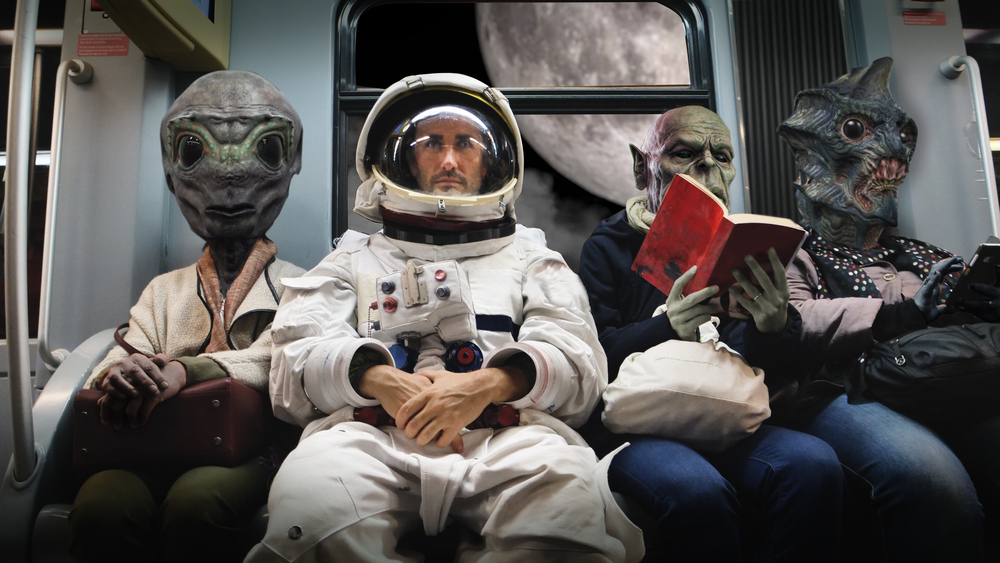Want to Work in Space? – Squinters Can Now Apply
Poor eyesight has long been the bugaboo of many aspiring astronauts, disqualifying more would-be space travelers than any other physical requirement since the beginning of the U.S. astronaut program in 1959. Now, nearly a half-century after the program began, NASA is loosening its vision standards, allowing more men and women to reach for dreams of flying into space.
As it kicked off recruitment of the 2009 candidate class this week, the National Aeronautics and Space Administration said for the first time it will consider applicants who have undergone two common types of vision-correction surgery: laser-assisted in situ keratomileusis, known as Lasik; and photorefractive keratectomy, or PRK. It will also slightly relax requirements for uncorrected vision to allow more contenders who wear glasses or contact lenses.
“The NASA endorsement of Lasik and PRK is a big thing,” says Smith L. Johnston, a NASA physician who oversees astronauts’ medical standards. Dr. Johnston says the reversal will open the door to many “sharp people” who in the past would have been ruled out. NASA allows some people who wear glasses or contacts to be astronauts — but only if their vision needs just minor correction, so that they can still function without them if necessary. Under the change, which follows similar moves by the Navy and Air Force regarding eyesight standards for pilots, people whose uncorrected vision would otherwise disqualify them can get surgery.
NASA’s endorsement of refractive surgery is a bit of good news for the vision-correction field itself, whose growth in the U.S. has slowed in recent years despite a number of technology improvements. David Harmon, president of Market Scope LLC, an industry research firm in Manchester, Mo., expects about 1.4 million procedures in the U.S. this year, a level that falls a tad short of the peak year of 2000 and represents only a 1% growth rate over 2006.
NASA astronaut applicants need a bachelor’s degree in engineering, science or math, along with three years of relevant professional experience. NASA said it is accepting applications through July 1, with final selections to be announced early in 2009. Twelve to 30 people are typically selected from a pool of several thousand applicants. But the space program has exacting vision standards and failure to meet them has historically been “the No. 1 disqualifier” for astronauts, Dr. Johnston said.
Dave Gianakos, a 53-year-old pilot for Northwest Airlines, still remembers feeling “crushed” when his eye doctor told him at age 7 that the vision in his left eye was “less than 20-20.” The slight myopia disqualified him from being a Navy pilot, he says. If both NASA and the Navy had eased their vision requirements 30 years ago, he says, he might have “gone the military route, and possibly become an astronaut.” That path has been followed by many astronauts who started out as military pilots. Commercial airline pilots are generally allowed to wear glasses, contacts or have vision-correction surgery.
NASA’s decision reflects more than a decade of research by military eye doctors, especially in the Navy.
Efforts to find a safe and reliable vision-improvement procedure began in the early 1990s after Navy SEALS complained about the hassles of glasses and contact lenses, which many wore despite having very good uncorrected vision. The Department of Defense wanted to improve retention of highly trained personnel, such as pilots, whose vision needs to stay sharp as they age. Private doctors say the Navy’s refractive surgery research is unusually authoritative because of its independence from commercial companies and industry bias.
In May, the Air Force changed its policy to allow people applying for aviation jobs to have had Lasik surgery. That follows a similar move by the Navy last year. The Air Force said its decision was based on studies showing “little to no effect” on treated eyes when they were subjected to the wind blast of aircraft ejection or exposure to high altitude.
NASA also says it worried about adverse effects of astronauts’ exposure to pressure changes during shuttle liftoffs and extravehicular space walks.
These concerns focused on the first step of Lasik, in which a surgeon uses either a handheld device or a laser to create a flap in the cornea. The flap is lifted and folded back before the underlying cornea is reshaped with a different type of laser.
Doctors have feared that extreme environments, such as those found underwater or in space, could cause flap dislocations, possibly leading to a catastrophic vision loss. Navy research has found that the three-year risk for such dislocations is extremely small, about 1 in 9,000.
Such worries were well-founded, however. People who had an early type of vision-correction surgery — RK, or radial keratotomy — can suffer alarming corneal changes at high altitude. Military doctors documented the problems in studies done on RK patients on Pike’s Peak in Colorado in the early 1990s. The findings helped to explain the experience of a renowned mountain climber and RK patient, Beck Weathers, whose eyesight failure on Mount Everest was described in the 1998 book, “Into Thin Air.”
The same Pike’s Peak studies, however, found no such problems with PRK, a procedure that uses a laser to reshape the cornea without cutting a corneal flap. Further studies validated the safety and effectiveness of PRK, which the Navy approved for aviators in 2004. But the surgery can be painful and the minimum recovery time for pilots is about three months, a long layoff. By contrast, Lasik requires a much shorter recovery time and is virtually painless.
These advantages allowed Lasik in the late 1990s to quickly surpass PRK, which received Food and Drug Administration approval in 1995. But human tests showed that visual outcomes for Lasik patients weren’t as good as those for PRK, says Steven Schallhorn, an ophthalmologist who oversaw the Navy’s refractive surgery program before retiring earlier this year to go into private practice in San Diego. The former top gun pilot and instructor opposed Lasik in aviators until last year.
That’s when he and other Navy researchers completed evaluation of Lasik combined with two new technologies: wavefront-guided software and the femtosecond laser.
The software is used to create a customized map of a patient’s cornea before it’s zapped by an excimer laser. The femtosecond laser, better known as IntraLase, offers more precision than handheld devices and is used in what is popularly called “all-laser Lasik.” With these technologies, Lasik is as good as PRK, Dr. Schallhorn says now. The first Navy aviators had Lasik late last year.
That left NASA as the last frontier. No treated astronaut has ever flown in space. But that could change quickly now that the agency has rescinded its opposition. At least one astronaut requested surgery — and was denied — before the change.
Original Post: Wall Street Journal


